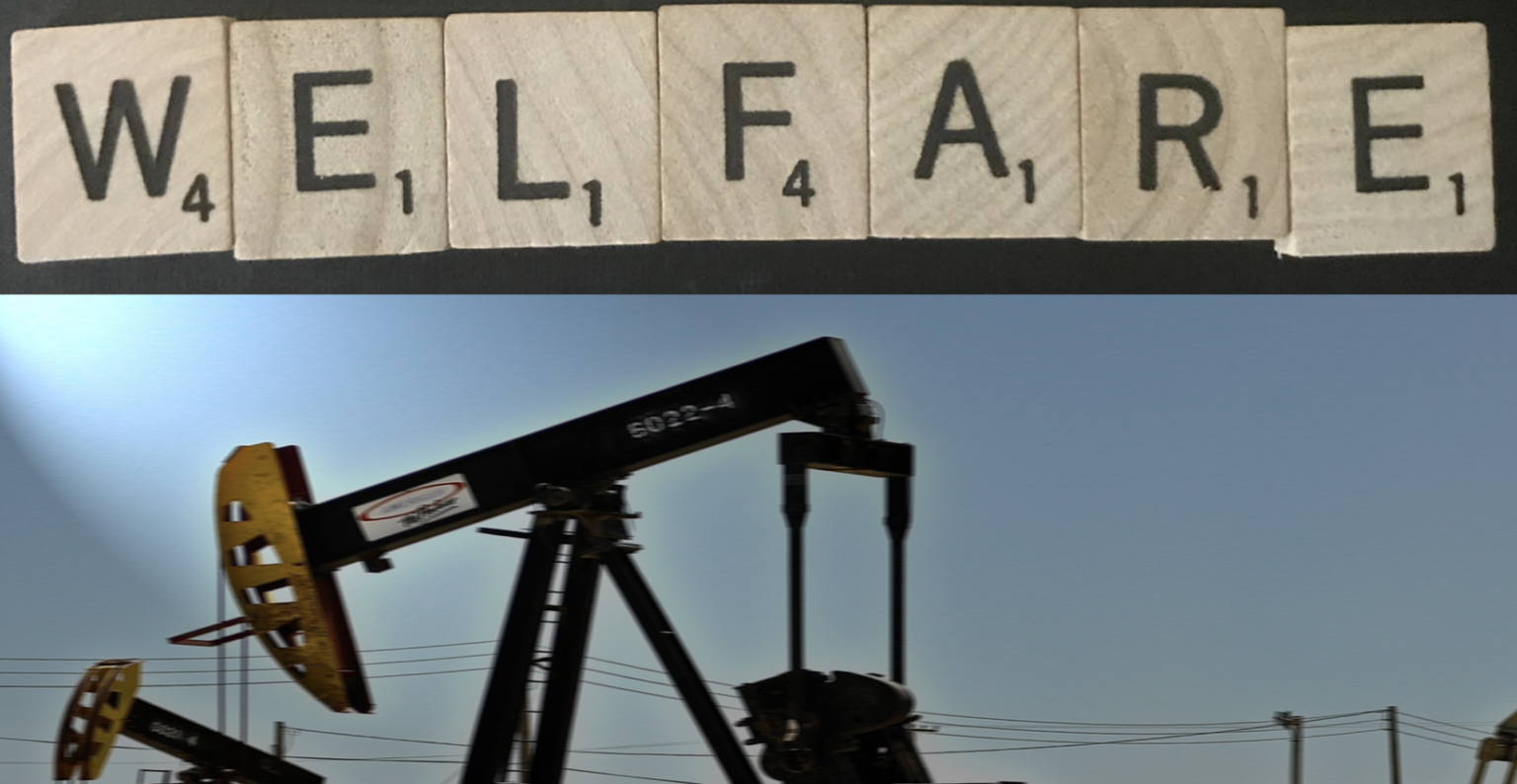A new study published in the peer-reviewed journal Nature Energy found that 50 percent of new oil production in America would be unprofitable if not for government subsidies. The study, performed by researchers at the Stockholm Environment Institute and Earth Track, Inc., found that, at prices of $50 per barrel, light oil produced by hydraulic fracturing (“fracking”) was heavily dependent on subsidies.
In fact, forty percent of the Permian basin in Texas would be economically unviable without subsidies, and for the home of Bakken crude production, Williston Basin, that number jumps to 59 percent, according to the researchers.
In addition, the study highlights what this additional fossil fuel production means for impacts to the climate:
“…continued subsidies for oil investment could produce oil (and associated gas) that, once burned, will yield CO2 emissions equivalent to nearly 1 percent of the remaining global carbon budget for all sectors of all economies.”
At current oil prices, perhaps the most effective “keep it in the ground” strategy might be to stop subsidizing oil production.
But what happens with these subsidies when the price of oil is over $100 per barrel, as it was several years ago? The authors of the study report that, under such a scenario, government subsidies are simply “transfer payments” to oil investors. The oil would be profitable without the subsidies, which become, at that point, simply free cash for investors.
While this study provides valuable insight into how subsidies affect oil production and the climate, it notes that its conclusions are not unique. The authors point out: “As others have found regardless of the oil price, the majority of taxpayer resources provided to the industry end up as company profits.”
US Taxpayers Subsidizing Oil Exports to China
Since the U.S. crude oil export ban was lifted in 2016, exports have risen much faster than most purported experts predicted, with volumes recently topping 1.5 million barrels per day. Much of these exports are the heavily subsidized light sweet oils produced by fracking in the oil fields of Texas and North Dakota.
And while major oil producers such as Harold Hamm, CEO of Continental Resources and major Trump donor, testified in Congress that it was unlikely U.S. oil would be exported to China, that has quickly proven to be false.
Bloomberg recently reported that Wang Pei, an executive for Chinese oil and gas company Sinopec, said, “Our refining system really likes U.S. crude.”
That appetite for oil in China and other nations like India isn’t shrinking, spurring the U.S. oil and gas industry to ramp up production to export far greater amounts.
Why are U.S. oil producers so keen to export their oil to other countries? Terry Morrison of Occidental Petroleum recently made the answer clear, saying, “It’s an alternative outlet for your production, i.e. better prices.” Better prices. At this point, American taxpayers are now subsidizing oil production so that oil companies can sell it to other countries like China for higher prices.
As the Midland Reporter-Telegram notes, “analysts are forecasting Permian Basin crude production will increase between 400,000 and 700,000 barrels per day in the coming years,” with the majority likely for export. However, as the Nature Energy study pointed out, 40 percent of that production is dependent on subsidies making it economically viable in the first place.
Taxpayer-funded subsidies don’t just incentivize oil production for export. As previously noted on DeSmog, taxpayers are also subsidizing the expansion of ports in Texas to provide access for loading oil onto the largest oil tankers, also destined for foreign shores.
India just received its first shipment of American oil and as DNA India reported, “Officials here said the U.S. crude supply will help India to keep oil prices low and stable to benefit consumers.” Then, U.S. taxpayers are ponying up money for oil production to benefit foreign consumers. This seems like a bad deal for U.S. taxpayers and a horrible deal for the climate — but another big win for the oil industry.
Subsidies Impact Everything
The oil industry, led by its lobbying group the American Petroleum Institute, has long denied that it receives anything akin to a “subsidy.” In January former ExxonMobil CEO and now Secretary of State Rex Tillerson repeated this industry talking point during a Senate confirmation hearing. In response to a question from Sen. Jeanne Shaheen (D-NH), Tillerson said, “I’m not aware of anything the fossil fuel industry gets that I would characterize as a subsidy.”
Yet this new study notes that subsidies aren’t simply cash being handed to oil companies. Subsidies often come in the form of tax breaks, which is just one of the many ways oil companies receive government handouts.
Another subsidy of sorts noted in the report relates to the fact that the oil industry isn’t required to have nearly enough insurance to cover accidents like the deadly crude oil train explosion and fire in Lac-Megantic, Quebec. The study notes that “the July 2013 crude oil train explosion in Lac-Megantic, Quebec involved a Class II railroad with only $25 million in liability insurance. Costs of $2 billion or more will likely be shifted to the public.”
However, some of the main impacts of this ongoing support of the oil industry are the ongoing impacts to the climate, the environment, and public health. Should America be subsidizing oil for India and China, two countries that have crippling air pollution issues? What additional costs will be incurred due to climate change thanks to these subsidies?
Increased oil and gas production in the U.S. also means increased water consumption, increased contaminated fracking waste, increased spills, increased oil trains, increased earthquakes, and increased flaring.
A newly released poll from the University of Chicago and The Associated Press-NORC Center for Public Affairs Research found that 61 percent of Americans “think climate change is a problem that the government needs to address.” This latest study points to one major way the government could do that: by making the oil and gas industry pay the true costs of production instead of relying on U.S. taxpayers to insure its profits.
Main image is a derivative of “Creative Commons Oil Rig” by SMelindo, used under CC BY 2.0
Subscribe to our newsletter
Stay up to date with DeSmog news and alerts







